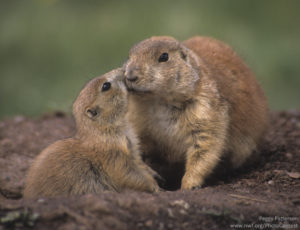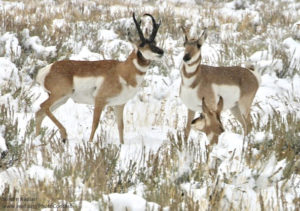We have much more to do and your continued support is needed now more than ever.
New Methane Rule: Good News for Wildlife

The announcement included actions from four federal agencies: Environmental Protection Agency (EPA), Bureau of Land Management (BLM), Department of Energy (DOE), and Department of Transportation (DOT). The EPA will issue regulations requiring reductions of methane from new and modified oil and gas production sources and natural gas processing and transmission sources. EPA’s draft rule is projected to be out this summer for comment and finalized in 2016. BLM will propose standards reducing venting and flaring of natural gas from both new and existing oil and gas wells on public lands. Draft standards are expected in the spring of this year. DOE will work to develop advanced technologies to reduce waste from natural gas transmission and distribution and DOT will propose new natural gas pipeline safety standards which will both improve safety and reduce leaks.
Unfortunately, meeting the presidents goal of 45% reduction by 2025 will require more than what has been proposed. Specifically, EPA needs to regulate existing sources of methane emissions as well. While this announcement doesn’t include everything we hoped for, it is a very positive development for wildlife and communities and leaves the door open for stronger rules down the line.
Methane Regulation Means Increased Benefits to Wildlife and People Alike
The oil and gas industry is the largest emitter of methane in this country and their development has multiple impacts on wildlife. Energy development has been tied to decreasing populations of species like mountain plovers, black-tail prairie dogs and sage grouse, as well as large game species such as pronghorn and mule deer.

But perhaps the greatest threat that methane waste and pollution pose to wildlife and their habitat is that methane is a potent greenhouse gas – 86 times stronger than carbon over 20 years – meaning a small amount of leakage can have big impacts on climate. Climate change shifts the availability of food and water and increases the conditions for wildfires and droughts, making western species even more vulnerable to an unchecked oil and gas industry.
Luckily, cutting methane can be achieved in a cost-effective, efficient manner using existing technologies that often pay for themselves in a matter of months. The methane white papers released by EPA in April of this year confirm that methane emissions can be effectively limited at a low cost. In many cases, it simply means preventing leaks and waste of a public resource, to capture more of a useful product. This is especially true for the BLM rule, which will regulate methane waste on public lands and guarantee tax payers receive due royalties from developing a public resource.
Getting Serious About Climate Change

This is an essential first step in addressing methane pollution and waste; but we need to keep in mind that it is only a first step. Pollution from existing sources will need to be addressed if we are to keep climate change from reaching disastrous levels. The IPCC found that more than 50% of the warming in the next two decades will come from short-lived pollutants like methane, making its immediate regulation even more important. None the less, the administration’s announcement marks an important and achievable step to reducing the impacts of energy development on wildlife, ecosystems, and communities and we look forward to even more progress!
Please retweet and join us in thanking the President for taking action on a commonsense rule to protect the future of our western landscapes and the species and people that enjoy them!
Thank you @WhiteHouse for taking action to protect wildlife from methane pollution! http://t.co/u5qfceX8le pic.twitter.com/XaPpyBgDJS
— Wildlife Action (@wildlifeaction) January 16, 2015





















